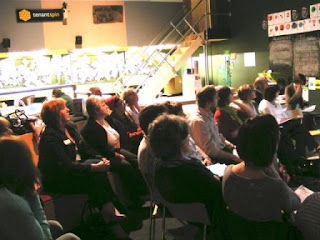It was a beautiful birth for many reasons, the babies were born at 40+3, in a Midwifery Led unit at Liverpool. She laboured in the pool and the birth was intermittently monitored, no cannula sited or paeds present.
We were lucky to have a fantastic Consultant midwife who drove a few hours in the early morning to be with us and support the midwives in the unit who were concerned about conducting a twin birth without constant monitoring and in the low risk area and also a lovely obstetrician who had supported the birth plan throughout the pregnancy and birth.
It was a lovely, calm and normal birth, she used a tens machine and entonox and both twins were head down. The first twin (a boy) was 7lb 2oz and the little girl was born 15 Min's later 5lb 5oz. The midwives were great, checking with two handheld Doppler's that they had two heartbeats and stabilising the little girl after her brother was born to help prevent her turning transverse.
After the birth they left us alone so she could have skin to skin, she had no tearing and I left her happily breastfeeding the babies.
This birth was calm and relaxed and normal and shows that how low risk twin birth should be!




















 I think the pull down double beds are a FANTASTIC idea. With the beds up, there is lots of space to move around and there is less of that sense of a bed dominating the room. The bed is also low to the ground so may feel more 'Safe' than beds which are high up off the ground, in the Cork birthing room that I mentioned in a previous post, whilst I love the decor (much more like an expensive spa than a hospital) the bed does not look as comfortable or welcoming as St Mary's!
I think the pull down double beds are a FANTASTIC idea. With the beds up, there is lots of space to move around and there is less of that sense of a bed dominating the room. The bed is also low to the ground so may feel more 'Safe' than beds which are high up off the ground, in the Cork birthing room that I mentioned in a previous post, whilst I love the decor (much more like an expensive spa than a hospital) the bed does not look as comfortable or welcoming as St Mary's!


 Here's a slightly more Hi tech room.
Here's a slightly more Hi tech room.
 I will be adding more photo's of birthing rooms which I think are innovative or encourage physiological birth.
I will be adding more photo's of birthing rooms which I think are innovative or encourage physiological birth.



